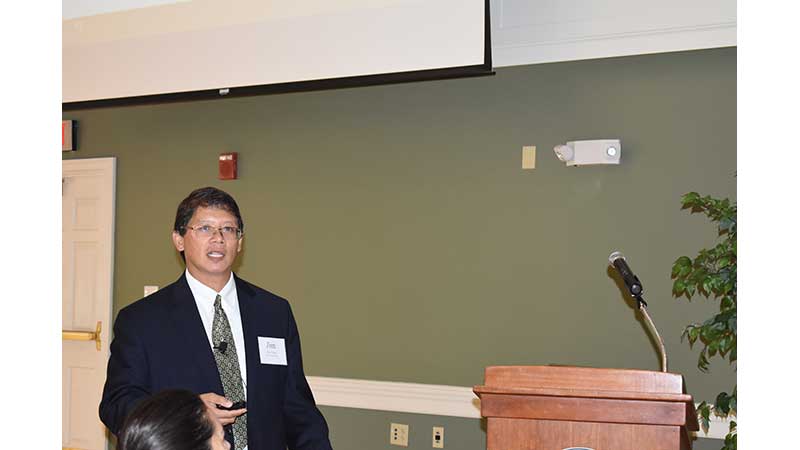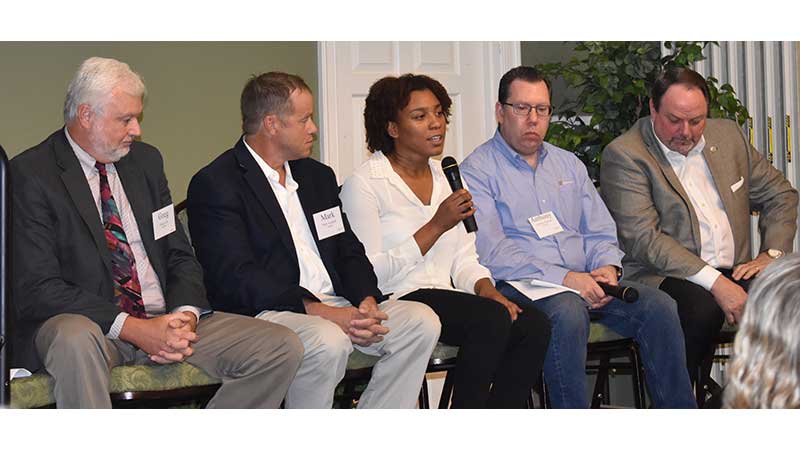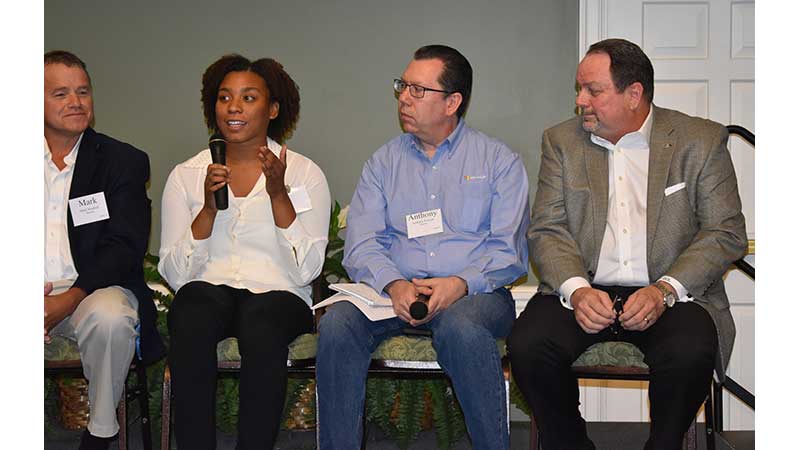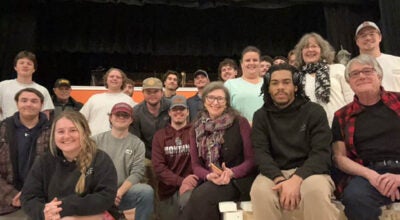Summit explores workforce
Published 10:59 am Thursday, October 11, 2018
A workforce summit held at Longwood University’s Blackwell Ballroom discussed recognizing a trend toward more technological, data-driven careers and how employers, educational institutions and businesses can take advantage of this trend, particularly in attracting and building up the Generation Z/Millennial workforce.
The daylong summit featured Jim Fong, the founding director of University Professional and Continuing Education Association (UPCEA) Center for Research and Strategy. UPCEA, the Washington D.C.-based association, focuses on aiding higher learning centers by promoting research and standards of good practice in higher education.
The summit also featured a panel of four prominent industry leaders in the region and a student representative of Southside Virginia Community College (SVCC) moderated by Keith Harkins, vice president for workforce development and continuing education with SVCC.
Following the panel, participants shared lunch and collaborated with one another to answer six questions relating to economic development.
Sheri McGuire, associate vice president for community and economic development at Longwood, said the summit evolved out of meetings with community leaders to discuss how to create greater business opportunities in the region.
McGuire said since these leaders started meeting, Longwood and SVCC are collaborating to connect SVCC’s apprenticeship program with Longwood’s facilities management department. Longwood’s graduate and professional studies department and SVCC are also considering creating a teaching program where those working in a trade could transition into teaching others the trade.
Fong spoke about the discrepancies often faced by higher institutions of learning between the programs that universities offer versus the programs that are needed to excel in the current workforce.
Fong used Amazon, the largest internet retailer in the world, as an example.
Fong cited the explosion of artificial intelligence and robotics in the workforce, citing statistics that project that by 2038, robotics could be responsible for placing approximately 10.5 million jobs at risk.
The top declining occupations by percentage of job losses in secondary regions include more blue collar occupations such as correctional officers and jailers, woodworking machine operators, electricians, industrial truck and tractor operations.
The top growing occupations by percentage of jobs gained include personal care aides, home health aides, customer service representatives, tractor trailer truck drivers and real estate agents among others.
Fong described “the new collar” industries, industries focused on health care employees, maintenance and repair of advanced manufacturing items, coding and programming, and surveillance videoing and monitoring, including working with drones.
“Do you think higher education is realizing all this?” Fong said, noting that there has been some progress in terms of considering health care and computer science and technology. “I don’t know if our higher education institutions are getting together weekly around their tables with their key leader and saying, ‘is this happening?’ ‘What are we going to do next?’”
He argued that this insular approach to higher education, the goal that students obtain a bachelor’s degree above all else is not only damaging the most quickly growing industries in the economy but damaging the potential for Generation Z (those born after 1995) and Millennials (those born between 1981-1996) to be employed.
To counter this, Fong encouraged educators to consider offering students the opportunity to pursue certification programs for new collar industries and to implement the badge system used by coders to determine their competency in a coding program. He also encouraged colleges and universities to work closely with businesses in the region to best understand the industries that most need employees.
The panelists who participated included President and CEO of Mecklenburg Electric Cooperative (MEC) John C. Lee Jr.; Anthony Putorek, senior workforce development manager with Microsoft; Christian Jackson, a student at SVCC; Mark Southall, owner of Creative Electrical Contractors Inc. and Greg Cole, CEO of The Woodland, Inc.
Lee said he realized he had to work to attract Millennial employees after realizing that approximately 45 percent of his workforce at MEC were eligible for retirement in the next five years. He said most industries will have to accept, and adapt to the changing workforce and economic expectations.
“Hopefully we can all embark on that journey together,” Lee said.
Putorek, agreeing with Fong, said relevant certifications are what employers in the data center workforce most look for in potential employees.
He advocated for hands-on training program for students, programs that unlike 4-year degrees would not require compiling debt to complete. Putorek said Jackson completed an IT certification program.
Cole said working in the health care field, he and others have experienced the need to be adaptable as frequent changes are not only expected but anticipated.
“Technology … has given us so many advantages to improve care and quality and services,” Cole said. He said with all of the benefits of technology, he credited it to producing the downside of employees being unprepared to communicate with others or think outside the box.
He said The Woodland campus is labor-intensive with approximately 350 people employed. He said he doesn’t anticipate that aspect of the industry changing even with the progression of technology.
When asked how many employees each company could hire today, Lee said there are four vacancies at MEC; Putorek said Microsoft, as a global company, has thousands of openings, but regionally, job openings could expand into the dozens for full time employment in the next year and even hundreds over the next few years due to expansion of the location; Southall said he could double his workforce, but the challenge is finding qualified employees willing to do the heavy, labor-intensive work involved; and Cole said at least 15 that include licensed nurses to certified nursing assistants.
Jackson, describing her own experience as a young employee and student, said the IT certification program she took at SVCC was hands-on, and she and her classmates had to think quickly to come up with solutions.
“If so and so has a problem,” Jackson said, describing the challenges she and classmates faced when working through the program, “what are you going to do to fix it?”








